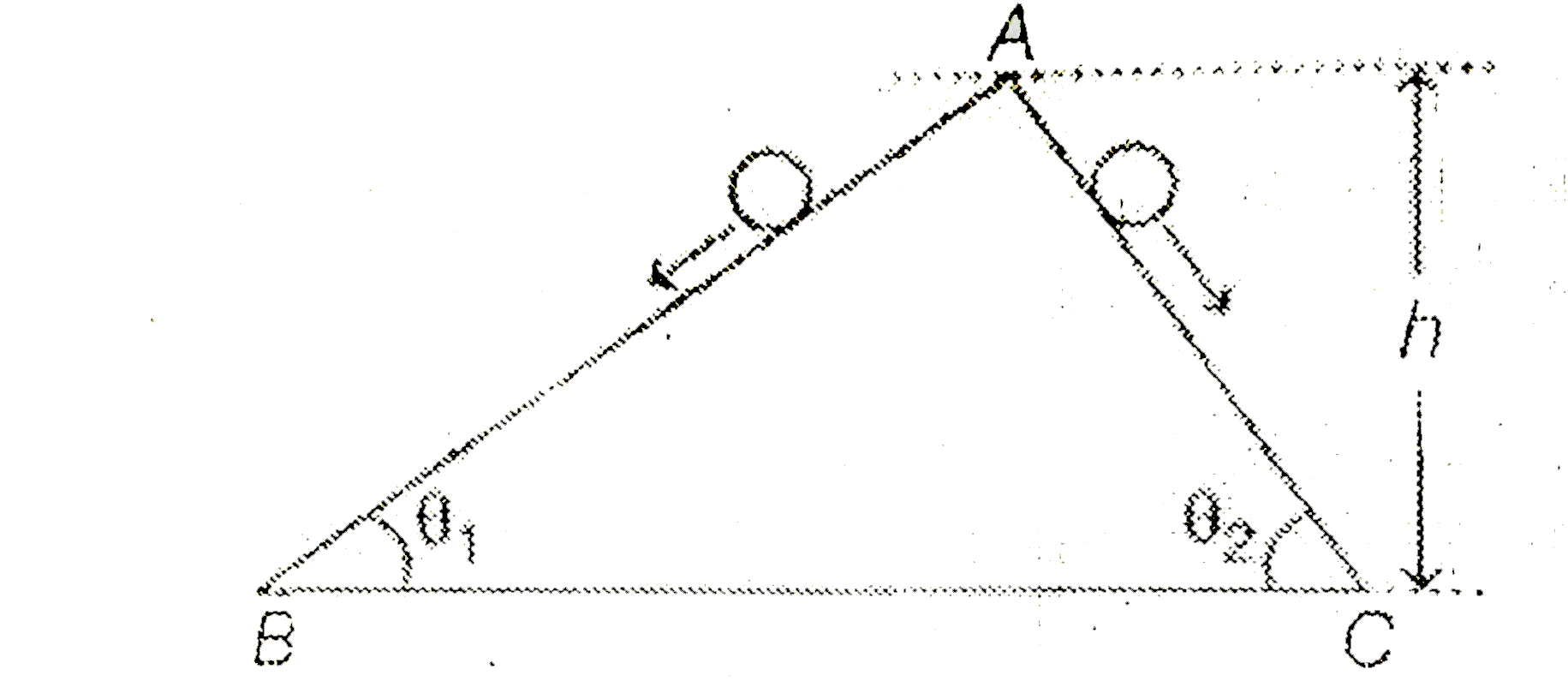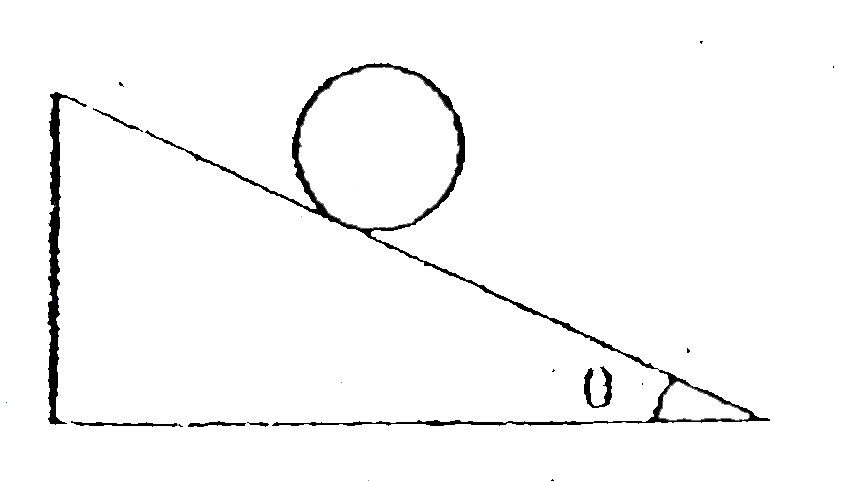A ring starts to roll down the inclined plane of height h without slipping . The velocity when it reaches the ground is
√10gh7
√4gh7
√10gh3
√gh
The correct Answer is:D
To solve the problem of a ring rolling down an inclined plane of height h without slipping, we can use the principles of energy conservation and the properties of rotational motion. Here’s a step-by-step breakdown of the solution:
Step 1: Understand the System
We have a ring that starts at a height h on an inclined plane and rolls down without slipping. The ring has both translational and rotational motion as it rolls.
Step 2: Apply the Conservation of Energy
The potential energy (PE) at the top of the incline will convert into kinetic energy (KE) at the bottom. The total energy at the top is given by:
PE=mgh
where m is the mass of the ring, g is the acceleration due to gravity, and h is the height.
At the bottom, the ring has both translational kinetic energy and rotational kinetic energy:
KE=12mv2+12Iω2
where v is the linear velocity of the ring, I is the moment of inertia of the ring, and ω is the angular velocity.
Step 3: Moment of Inertia and Relationship Between Linear and Angular Velocity
For a ring, the moment of inertia I is given by:
I=mr2
where r is the radius of the ring. Since the ring rolls without slipping, we have the relationship:
v=rω⇒ω=vr
Step 4: Substitute ω in the Kinetic Energy Equation
Substituting ω into the kinetic energy equation gives:
KE=12mv2+12(mr2)(vr)2
This simplifies to:
KE=12mv2+12mv2=mv2
Step 5: Set Potential Energy Equal to Kinetic Energy
Now, equate the potential energy at the top to the kinetic energy at the bottom:
mgh=mv2
Canceling m from both sides gives:
gh=v2
Step 6: Solve for v
Taking the square root of both sides, we find:
v=√gh
Conclusion
Thus, the velocity of the ring when it reaches the ground is:
v=√gh
We have a ring that starts at a height h on an inclined plane and rolls down without slipping. The ring has both translational and rotational motion as it rolls.
The potential energy (PE) at the top of the incline will convert into kinetic energy (KE) at the bottom. The total energy at the top is given by:
PE=mgh
where m is the mass of the ring, g is the acceleration due to gravity, and h is the height.
KE=12mv2+12Iω2
where v is the linear velocity of the ring, I is the moment of inertia of the ring, and ω is the angular velocity.
For a ring, the moment of inertia I is given by:
I=mr2
where r is the radius of the ring. Since the ring rolls without slipping, we have the relationship:
v=rω⇒ω=vr
Substituting ω into the kinetic energy equation gives:
KE=12mv2+12(mr2)(vr)2
This simplifies to:
KE=12mv2+12mv2=mv2
Now, equate the potential energy at the top to the kinetic energy at the bottom:
mgh=mv2
Canceling m from both sides gives:
gh=v2
Taking the square root of both sides, we find:
v=√gh
Thus, the velocity of the ring when it reaches the ground is:
v=√gh
Similar Questions
A solid cylinder of mass M and radius R rolls down an inclined plane of height h without slipping. The speed of its centre when it reaches the bottom is.
View SolutionA solid cylinder of mass M and radius R rolls down an inclined plane of height h. The angular velocity of the cylinder when it reaches the bottom of the plane will be :
View Solution
Knowledge Check
A solid cylinder of mass M and radius R rolls down an inclined plane without slipping. THE speed of its centre of mass when it reaches the bottom is
A√(2gh)B√4/3.ghC√3/4.ghD√(4g/h)A hollow sphere and a solid sphere both having the same mass of 5 kg and radius 10 m are initially at rest. If they are made to roll down the same inclined plane without slipping, the ratio of their speeds when they reach the bottom of the plane VhollowVsolid, will be
A1B7√10C7√12D21√25
Two dises having masses in the ratio 1:2 and radii in the ratio 1:8 roll down without slipping one by one from an inclined plane of height h. The ratio of their linear velocities on reaching the ground is :-
View SolutionA uniform solid spherical ball is rolling down a smooth inclined plane from a height h. The velocity attained by the ball when it reaches the bottom of the inclined plane is v. If ball when it reaches the bottom of the inclined plane is v. If the ball is now thrown vertically upwards with the same velocity v, the maximum height to which the ball will rise is
View SolutionA disc is rolling on an inclined plane without slipping. The velocity of centre of mass is V. These other point on the disc lie on a circular are having same speed as centre of mass.
When a disc is rolling on an inclined plane. The magnitude of velocities of all the point from the contact point is same, having distance equal to radius r.
View SolutionA disc rolls down a plane of length L and inclined at angle θ, without slipping. Its velocity on reaching the bottom will be :-
View SolutionA small disc is released from rest at A on an inclined plane AB so that it rolls down without slipping. It reaches the bottom with linear velocity v1 in time t1. Next a small ring released form rest on the inclined plane AC so that it rolls down without slipping. It reaches the bottom with linear vlocity v2 in time t2. Given θ1=30∘,θ2=60∘, and h=10m. Then,

View SolutionA solid cylinder is rolling down the inclined plane without slipping. Which of the following is correct?

View Solution
